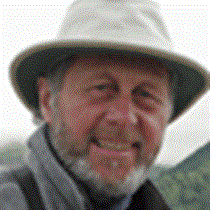It was the luxurious fur of the sea otter (our largest mustelid or weasel) that opened the Pacific coast of North America to exploration and development. Attracting first the Russians as early as 1740, then the British, Spanish and Americans, this beautiful species was reduced to near-extinction. But it was the beaver pelt that opened the rest of northern North America. To a beaver (our largest rodent), the temperate rainforest of the coast is marginal habitat at best. Its preferred deciduous trees and shrubs are rare and scattered here, but somehow this industrious animal has found its way onto the coast. In this case, it has settled on tiny Pond Island off the northeast side of Baranof Island. Our early morning hikers, - the "Eager Beavers" - mucked their way along a shallow creek, stepped gingerly through an extensive and silent muskeg, and fought off neck-grabbing branches in order to get to this idyllic beaver pond and dam. Evidence of the "woodwork" of this family group was scattered along the trial: small branches stripped of the sweet cambium layer, and large and small trees showing the marks of powerful chisel-teeth.
Meanwhile, our kayakers were nearby, truly enjoying the silent slip of paddles on calm water as they snaked among the many islets of Kelp Bay. In advance of these tiny craft, two brown bears made a casual exit from the beach, but Bald Eagles remained as sentinels.
The afternoon and evening were spent relaxing, admiring spectacular Kasnyku Falls, searching for bears and deer on the shores of Admiralty Island, and hearing the latest results of extended research into humpback whale behavior from Dr. Fred Sharpe of the Alaska Whale Foundation. Each day is a full day here.
Meanwhile, our kayakers were nearby, truly enjoying the silent slip of paddles on calm water as they snaked among the many islets of Kelp Bay. In advance of these tiny craft, two brown bears made a casual exit from the beach, but Bald Eagles remained as sentinels.
The afternoon and evening were spent relaxing, admiring spectacular Kasnyku Falls, searching for bears and deer on the shores of Admiralty Island, and hearing the latest results of extended research into humpback whale behavior from Dr. Fred Sharpe of the Alaska Whale Foundation. Each day is a full day here.




